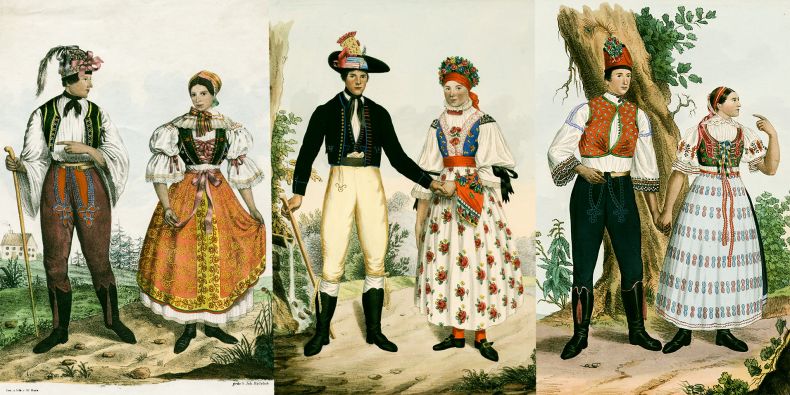Most of us have the impression that events like the Shrovetide carnival belong in villages, even though only a few years ago one would meet people and music bands in masks and fancy dress in the centre of Brno. Does this folk tradition have a future? It has survived into the present, after all.
Two women in their twenties, two examples of how the tradition persists in the third millennium.
Case 1: Klára Brožovičová recently completed a doctorate in Ethnology at the MU Faculty of Arts. She wrote her thesis on the last women in the Strážnice area to wear folk costume.
“I knew that it was now or never," says Brožovičová. “A few years from now there may not be anyone left I could talk to about it." She interviewed women in their seventies and eighties and one 69-year-old. Over a six-year period several of the women died. All, however, overcame their initial shyness and took pleasure in speaking about the traditional way of life. “It's a matter of honour for them," Brožovičová points out.
Case 2: Silvie Markovičová manages to study two subjects and perform with a folk ensemble. “I also paint decorative folk motifs on ribbons for folk costumes, on glass, and in wine cellars. The demand is quite high," she explains.
These activities take up a lot of a Markovičová's free time. Every Friday evening she attends a rehearsal that starts at seven and when necessary lasts until eleven; sometimes there are other rehearsals in the week, too. And of course there are the performances. She has loved folk culture since she was small, she says, “because of the people involved but also because I'm glad to be able to preserve and help develop traditions".
A hobby group like any other
Martina Pavlicová of the Institute for European Ethnology at the Faculty of Arts, which is involved with international organizations that concern themselves with folk culture, believes that first motives are ever more prominent in folk ensembles.
“In ensembles today the preserving of traditions may be important to the leader, but research shows that other members attend them for entertainment and because of the social benefits," explains Pavlicová, who goes on to say that she sees nothing wrong in this approach, not least as these new functions help ensure the continued existence of folk culture.
The history of the folk movement has long been documented to ensure the survival of folk culture. Educated people first expressed concerns about the disappearance of traditional ways of life, and the dances, songs and stories connected with them, at the end of the 18th century.
The earliest staged performances of folk dances and songs were held in the late 19th and early 20th centuries. Experts link this development with the Czecho-Slavic Ethnographic Exhibition held in Prague in 1895. “Its aim was to show the life of Czech and Slavic people, and it took several years to prepare," Pavlicová explains.
When an independent Czechoslovakia was established, folk art was an important source of its identity, a fact later exploited by the communist regime. “In the tense time after 1948 folk culture was perceived as ideologically acceptable for the socialist state," says Pavlicová. “Even so, certain of its manifestations had to be modified, resulting in what was known as 'new work'." In illustration she explains how at festivals banners would appear that bore the name of the cooperative responsible for the harvest and songs originated about track-type tractors superseding the wheeled variety.
But these did not enter folk consciousness; no one sings them today. The practice of the everyday means that folk culture is in a constant state of transformation, a fact observed by Klára Brožovičová, who monitored changes in folk dress.
Folk costume, too, is subject to fashion
The greatest developments were in what isn't seen – undergarments. “At the beginning of the 20th century, women didn't wear any," says Brožovičová. “Later, lace knickers appeared, but without the gusset. They were worn only so that nothing was seen under the skirts of girls playing music."
Even then, she says, trends of fashion applied. In the 1970s women would wear a blue top to match a blue skirt, but in the 1930s this would not have worked so well. The dictates of fashion have ensured the wearing of distinctive combinations.
Today's forms of traditional folk culture are not identical with those of the 19th century, of course. Although in the provinces wearers of traditional costume are disappearing, ethno-cultural traditions are not being lost to society; they continue to be preserved, not least in folk ensembles.
Data from the Folklore Association of the Czech Republic tell us that the country has 385 ensembles; the real figure is probably higher. There is a great variety of activities related to folk culture in many urban and rural locations. Martina Pavlicová tells us that new men's choirs are being founded. And in the Brno quarter of Vinohrady there was a recent attempt to institute the tradition of a neighbourhood festival.
